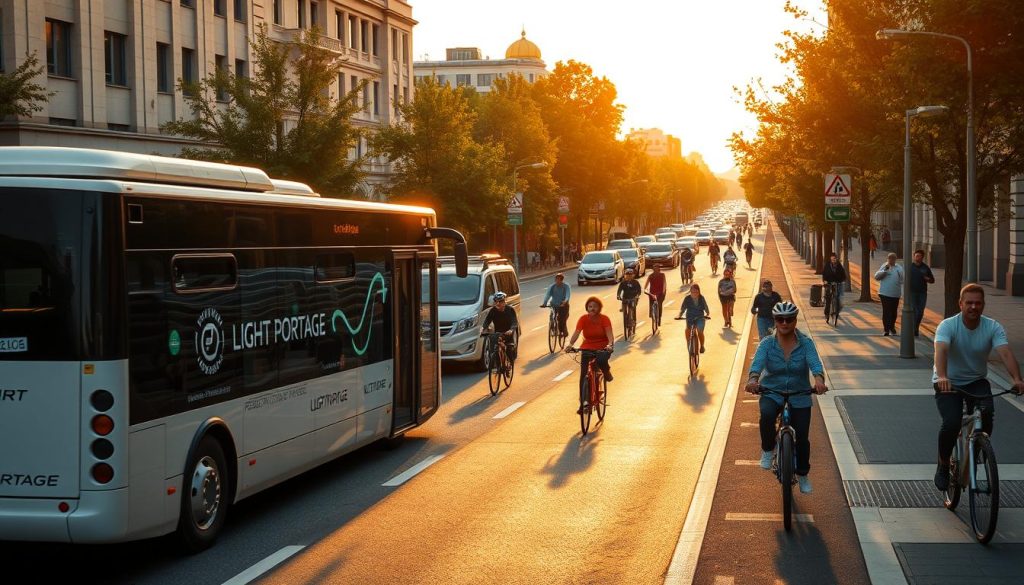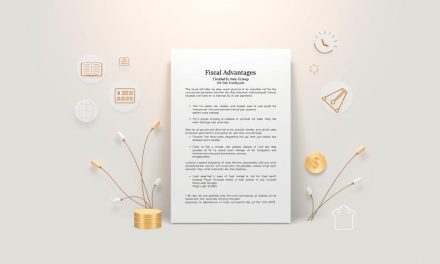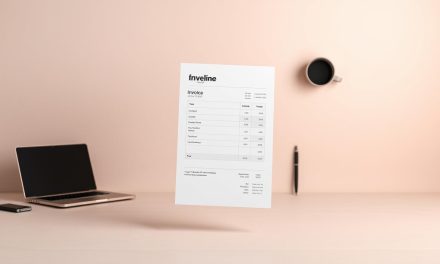We once met a Paris-based freelancer who lost a client after a supply delay. He then switched to 100% renewable energy, chose certified suppliers, and updated travel rules. Within months his costs fell and clients returned.
This story shows how small choices protect income while helping the planet.
In this guide we explain clear steps that link sustainability to steady revenue. You will learn how measured actions reduce your footprint and cut operating risk.
We outline practical fixes—from energy and procurement to waste and travel—that fit solo firms and small business owners in France. Each recommendation ties to real outcomes: lower bills, fewer disruptions, and stronger client trust.
Our aim is to help you prioritize what matters now and plan for the future with confidence. These are proven choices you can start this week and investments you can time over the year.
Table of Contents
Key Takeaways
- Adopt targeted steps to protect income and reduce environmental risk.
- Measure carbon and set clear targets to guide business decisions.
- Choose certified suppliers to improve supply resilience and trust.
- Balance quick wins (fix leaks, reduce travel) with longer upgrades.
- Small actions can shrink your footprint and strengthen client ties.
Why sustainability underpins long‑term professional stability in France’s future economy
Resilience in the French market begins with aligning operations to evolving climate and policy signals. EU CAP eco‑schemes aim to meet Green Deal targets by 2030, pushing shifts in agriculture, inputs, and supply chains that affect costs and availability.
Climate change increases supply volatility and price shocks for energy, raw materials, and food. Aligning early with these rules reduces your exposure and helps you stay competitive.
France’s policy environment is tightening. Following validated national Strategic Plans—like Farm to Fork and Biodiversity—means fewer surprises and earned trust from clients and stakeholders.
This is good business. Lower risk from energy and input price swings opens access to public tenders and sustainable development opportunities. Transparent reporting and verifiable sourcing build credibility with clients, local authorities, and other stakeholders.
- Embed low‑risk sourcing and clear reporting into core processes to support growth.
- Use available incentives and policy support to lower transition costs and execution risk.
- Align with EU trajectories to prepare your firm for evolving standards and buyer expectations.
For practical steps on building market readiness and business development in France, see business development in France.
Switch to clean energy and boost efficiency today
A practical energy plan—simple swaps and smart monitoring—reduces bills and business risk fast. We recommend immediate steps you can take in France that both cut emissions and improve cash flow.
Green electricity and rooftop solar
Switch to a 100% renewable electricity contract today to cut operational emissions quickly and signal leadership to clients who care about climate action.
Where feasible, install rooftop solar or solar water heating. Pair installations with a professional audit to size systems and sequence upgrades.
Energy efficiency first
Prioritize measures that pay back fast: insulate your home‑office, fit energy‑saving windows, and use programmable thermostats.
Replace incandescent bulbs with LEDs and group upgrades by load: heating/cooling first, then lighting and office equipment. This approach locks in long‑term reduction gains.
Policy signals and incentives
EU Green Deal targets drive incentives and regional audits across France. Use available rebates and free utility audits to lower upfront costs and speed change.
Tools to track savings
Install smart plugs and real‑time meters as tools to spot hidden loads. Data from meters lets you tweak behavior and document savings for clients.
| Action | Primary Benefit | Typical Payback | Notes for France |
|---|---|---|---|
| 100% renewable electricity | Immediate emissions cut | Immediate | Look for certified suppliers and green tariffs |
| Insulation & efficient windows | Lower heating/cooling costs | 2–7 years | Eligible for regional grants and audits |
| Rooftop solar / solar water | Energy independence, lower bills | 5–10 years | Pair with audit to size system |
| Smart meters & plugs | Immediate load insight | Useful for tracking lighting, equipment, and water heating |
Measure your carbon footprint and set science‑based reduction targets
A precise carbon inventory turns vague ambitions into clear, fundable actions. Start with a short baseline to find the highest‑impact sources and build a realistic plan.
Scopes 1, 2 and 3: what to measure first
Scope 1 covers direct fuel and on‑site use. Scope 2 is purchased electricity and heat. Scope 3 includes travel, supply chain, and other value‑chain emissions. Focus first on the categories that drive the most cost or risk.
From baseline to action with robust guidance
Use the Greenhouse Gas Protocol and UK DEFRA conversion factors to calculate a comparable baseline. CDP resources help you prepare transparent reports.
- Choose reputable calculation tools and primary data where possible.
- Translate the baseline into milestones, owners, and timelines.
- Prioritise quick wins: renewables, efficiency, and travel policy before harder fixes.
Make targets public and report often
Set a science‑based target aligned with 1.5°C and publish it. Track progress quarterly to adjust measures and avoid year‑end surprises.
« Transparency and regular tracking turn targets into trusted outcomes. »
Deliver a one‑page summary of your footprint, actions, and progress for clients and stakeholders to show quality and build trust.
Sustainable procurement that reduces environmental footprint and risk
A clear buying policy helps your company reduce risk and choose higher-quality products. Start with a short, written purchasing policy that requires certified materials and screens durability.
Purchasing policies: certifications and recycled materials
Require FSC or 100% recycled paper, Fairtrade options, and Soil Association Organic where relevant.
Publish rules for packaging minimization and returnable containers to cut waste at source.
Supplier screening: ethics, emissions, and biodiversity
Ask vendors for emissions reporting, deforestation‑free sourcing, and biodiversity safeguards.
Use vendor scorecards and contract clauses so suppliers meet your company standards and protect forests and labor rights.
Life‑cycle thinking: durability, repairability, and end‑of‑life
Prefer modular products with spares and manuals. Extend refresh cycles and pilot « buy less, buy better »—refurbished furniture and secondhand electronics save money and upstream impact.
Track total cost of ownership so sustainability choices are backed by clear economics and stakeholder transparency.
- Tip: Publish a supplier code to engage stakeholders on protection of forests and anti‑corruption.
Cut waste at the source and design out pollution
Designing out pollution begins with the choices you make before a product arrives on site. We advise a clear, purchase‑first mindset: refuse unnecessary items, then reduce what you order.
The waste hierarchy in practice: refuse, reduce, reuse, recycle, rot
Apply the hierarchy to every purchase and process. Refuse nonessential items. Reduce volumes by standardizing orders and keeping an asset inventory. Reuse goods and choose items with repair options.
Eliminate disposables and single‑use plastics
Mandate reusable cups, bottles, and mailers in client work. Swap single‑use plastics for returnable or refillable alternatives to cut pollution and long‑term cost.
Office print reduction: go digital by default
Set digital signatures, cloud proofing, and default duplex/black‑and‑white. Track monthly waste generation and set a visible reduction target.
- Prefer bulk buying with minimal packaging and supplier return loops.
- Train teams on correct sorting to avoid contamination of recycling.
- Celebrate measurable wins to reinforce good habits and build trust with clients.
« Refuse first, then reduce and reuse — small actions remove risk and save money. »
Low‑carbon travel and mobility choices that work for business

Travel choices shape both cost stability and client confidence; small rules make a big difference.
Virtual by default means use video calls first and reserve travel for clear client value. Define a short list of exceptions so service quality never slips.
Rail, transit and shared mobility
Adopt a rail‑over‑air rule for regional trips under a set time threshold. Make decisions fast with a simple table or decision tree in your travel policy.
Encourage public transit and car‑share options and set reimbursement rules that favour low‑carbon choices.
Vehicle care for better efficiency
Maintain vehicles proactively: correct tire pressure, timely tune‑ups, and efficient routing cut fuel and time waste.
A tire 20% underinflated can raise consumption by about 10%, so simple checks pay off quickly.
| Measure | Benefit | Quick note |
|---|---|---|
| Virtual first | Lower travel costs & carbon | Set clear exceptions |
| Rail over air | Reduced emissions for regional trips | Use time thresholds (e.g., ≤4 hours) |
| Vehicle maintenance | Better fuel efficiency | Check tires monthly |
« Small travel rules reduce risk and save money. »
Track miles and modes to spot change opportunities. Share lessons with clients; your action encourages suppliers to follow.
Food and water choices that protect climate and biodiversity
What you serve and how you use water directly affects biodiversity and long‑term operating risk. Small, clear rules save money and show clients you care about the planet.
Plant-forward menus and better-sourced ingredients
Shift catering toward plant-forward menus and ask suppliers to use RSPO-certified palm oil in snacks. Offer at least 50% vegan options for events, as recommended by WWF‑UK.
Less but better meat: choose organic, free‑range cuts that respect animal welfare and reduce pressure on habitats and animals.
Be water-wise: fixtures, leaks, and landscaping
Audit kitchen water use and install low‑flow taps and aerators. Fix leaks quickly to avoid waste and surprise bills.
Consider xeriscaping any outdoor area to cut irrigation needs and support local pollinators.
- Publish simple dietary guidelines for meetings and verify ingredient sourcing.
- Track catering spend by category to measure gains and redirect budgets to local, seasonal suppliers.
- Educate teams with quick footprint comparisons to link choices to climate and biodiversity outcomes.
« Small menu and plumbing choices protect nature and reduce cost. »
Office operations that protect people, animals, and planet
Small, consistent changes in your office reduce risk to staff and to nature while keeping operations reliable. Start with simple rules that everyone can follow and measure. These moves protect budgets and reputation across France.
Deforestation‑free paper: 100% recycled or FSC
Standardize deforestation‑free paper (100% recycled or FSC) across the company and set clear print‑reduction targets.
Less printing cuts cost and reduces demand for virgin materials. Use duplex defaults and digital approvals to lower paper use.
Healthy spaces: plants, air quality, and staff wellbeing
Improve indoor air quality with office plants and low‑VOC supplies to boost productivity and wellbeing.
Replace disposable items with durable materials to cut waste and protect wildlife. Maintain efficient restroom fixtures and fix water leaks promptly.
- Adopt cleaning products with low chemical impact and document their use.
- Create a simple office checklist for daily desk and meeting‑room habits.
- Run Earth Hour and share a short progress dashboard to build engagement.
« Small operational habits protect people and the environment while strengthening business resilience. »
Sustainable practices for independent professionals

Before you click « buy », ask whether an item extends your work or just adds clutter. This simple pause guides buying choices that save money and reduce risk. It also starts a credible change you can share with clients.
Think twice before shopping: buy less, buy secondhand
Adopt a “buy less, buy secondhand” rule for equipment and furniture. Refurbished monitors and secondhand desks cut upfront cost and lower your footprint.
Ditch fast fashion and choose truly sustainable materials
Move away from fast fashion. Choose durable apparel and certified materials so garments last longer. This models quality to clients and reduces waste in the world.
Green your home‑office: insulation, LEDs, and smart thermostats
Upgrade gradually: add insulation, switch to LEDs, and fit a smart thermostat. These steps lower bills and make work more comfortable.
- Prefer repairable electronics and keep firmware updated.
- Keep a minimalist gear list and plan end‑of‑life for each product.
- Buy modular upgrades, and source refurbished items with warranties.
- Share your practical journey online — it builds trust and shows real impact.
« Small, consistent choices protect budgets and show clients you mean it. »
Finance, certifications, and policies that align stakeholders
A clear governance plan turns ambition into measurable results for your firm and its partners. Start by choosing a management framework that sets roles, records risk, and schedules reviews.
ISO 14001 as a roadmap for continuous improvement
Use ISO 14001 or a gap analysis to create repeatable procedures and continuous review cycles. This helps the company embed sustainability into daily work and link objectives to audit-able records.
Planet-aligned pensions and investments
Review pension and investment policies to remove fossil-fuel exposure and support planet-aligned funds. This reduces long-term financial risk and signals commitment to clients and partners.
Travel and procurement policies that turn goals into action
Write a travel policy (virtual first, rail over air) and a procurement policy with verifiable criteria. Integrate commitments into proposals so services are contractual, not optional.
| Measure | Purpose | How to implement |
|---|---|---|
| ISO 14001 / gap analysis | Systematic improvement | Assign roles, document processes, schedule reviews |
| Pension & investment review | Financial alignment | Exclude high-risk assets; choose planet-aligned funds |
| Policy & contracts | Turn targets into action | Embed rules in proposals and supplier terms |
« Treat offsets as a last resort after prevention and reduction; prefer Gold Standard when needed. »
Publish an annual statement that summarises progress, lessons, and next steps. Engage clients with co-developed initiatives to scale impact and keep momentum for continued action.
Land use, agriculture, and community action in the French context
Local land use decisions influence water quality, biodiversity, and economic resilience. CAP eco‑schemes channel funds toward measures that meet climate and environmental goals beyond baseline rules.
Aligning with these schemes gives you practical levers to reduce risk and support local development.
Align with CAP eco‑schemes: organic, IPM, and landscape measures
CAP targets include more organic area, big pesticide reductions, and lower nutrient losses by 2030. Support for IPM, cover crops, buffer strips, and mechanical weed control improves soil and protects water.
Encourage supply relationships that reward farms using precision irrigation, improved manure management, and resilient crop varieties. These choices protect resources and help meet antimicrobial and animal welfare goals.
Support local communities: volunteering, habitat work, and advocacy
Partner with local groups on habitat creation, wetland rewetting, and citizen science. Volunteer days and small grants build trust and practical conservation outcomes.
Advocate for sensible national policy and publish short impact snapshots so stakeholders see how your work supports biodiversity and water quality in the region.
| Action | Main Benefit | Local impact |
|---|---|---|
| Cover crops & buffer strips | Reduce runoff, boost biodiversity | Cleaner water, richer soils |
| Precision irrigation | Save water and nutrients | Fewer shortages, lower input costs |
| Wetland rewetting & manure fixes | Cut nutrient loss, support conservation | Stronger habitats, improved water quality |
« Small local actions add up to measurable gains for nature and business. »
Conclusion
Finish with a clear roadmap that turns day‑to‑day choices into measurable business benefits. Start with energy upgrades to cut emissions and bills, then use simple tools to reduce water use and waste. Measure your carbon footprint, set a credible target, and report progress so clients see real impact.
Adopt sustainable practices at activity, process, and company levels: choose better products, update travel and procurement rules, and expand food and water stewardship. Engage communities and use one source of truth for data. Small, consistent actions today compound into resilience for your company and the planet — positioning you to thrive through climate change and into the future.
FAQ
What does "Implementing Sustainable Practices for Professional Stability" mean for an independent professional?
It means adopting durable approaches that reduce your environmental footprint while strengthening income resilience. Practically, this includes lowering energy use, choosing low‑carbon products, reducing waste, and integrating biodiversity and community considerations into your services. These steps protect the planet and help secure client trust and long‑term contracts.
Why does sustainability underpin long‑term professional stability in France’s future economy?
France is aligning policy and market incentives with EU targets like the Green Deal. Clients and regulators increasingly prefer low‑carbon suppliers. Adopting efficient energy, transparent emissions reporting, and responsible procurement reduces regulatory risk and opens market opportunities, supporting steady revenue streams.
How can I switch to clean energy and boost efficiency today?
Start by sourcing green electricity through providers or guarantees of origin and assess rooftop solar where feasible. Prioritize energy efficiency: improve insulation, install LED lighting, and use smart thermostats and controls. Use real‑time meters and energy audits to track progress and savings.
How do I measure my carbon footprint and set credible reduction targets?
Use the GHG Protocol to map Scopes 1, 2, and 3. Establish a baseline with DEFRA factors or similar emission factors, then set science‑based targets aligned with a 1.5°C pathway. Publish targets publicly and report progress to remain accountable.
What should sustainable procurement look like for a small business or freelancer?
Build purchasing policies that prefer certified materials (FSC, recycled content) and durable, repairable goods. Screen suppliers for ethics, emissions, and biodiversity impacts. Apply life‑cycle thinking: choose products that last and can be recycled or composted at end‑of‑life.
How can I cut waste at the source and design out pollution?
Apply the waste hierarchy—refuse, reduce, reuse—before recycling. Eliminate disposables and single‑use plastics in operations. Digitize documents to reduce office printing and implement composting or circular reuse for materials you do use.
What are practical low‑carbon travel and mobility choices for business?
Make virtual meetings the default. Prioritize rail travel over short‑haul flights, use public transit, and adopt car‑share or electric vehicle options when needed. Maintain vehicles well—regular servicing and correct tire inflation cut fuel use and emissions.
How do food and water choices affect climate and biodiversity in a business context?
Offer plant‑forward menus and source better‑managed meat and RSPO‑certified ingredients to lower emissions and protect ecosystems. Conserve water with efficient fixtures, prompt leak repairs, and xeriscaping where appropriate to reduce demand and costs.
What office operations protect people, animals, and the broader environment?
Choose deforestation‑free paper—100% recycled or FSC certified—and prioritize indoor air quality with plants and filtration. Create healthy, accessible spaces that support staff wellbeing and reduce pollution, while considering wildlife impacts in procurement and landscaping.
How can independent professionals apply these approaches at home or in a small office?
Buy less and choose secondhand or high‑quality goods. Move away from fast fashion to materials with longer lifespans. Improve your home‑office with basic measures: add insulation, switch to LEDs, and install a smart thermostat to cut energy use and lower bills.
Which certifications and financial choices help align stakeholders with my goals?
Use ISO 14001 as a framework for environmental management and continuous improvement. Direct pension and investment choices toward funds aligned with climate goals. Translate ambitions into action through clear travel and procurement policies that stakeholders can follow.
How can land use and agriculture measures be applied by businesses operating in France?
Align procurement and partnerships with CAP eco‑schemes—favor organic suppliers, integrated pest management, and biodiversity features. Support local community projects like habitat creation and volunteer programs to strengthen local resilience and supply‑chain sustainability.





